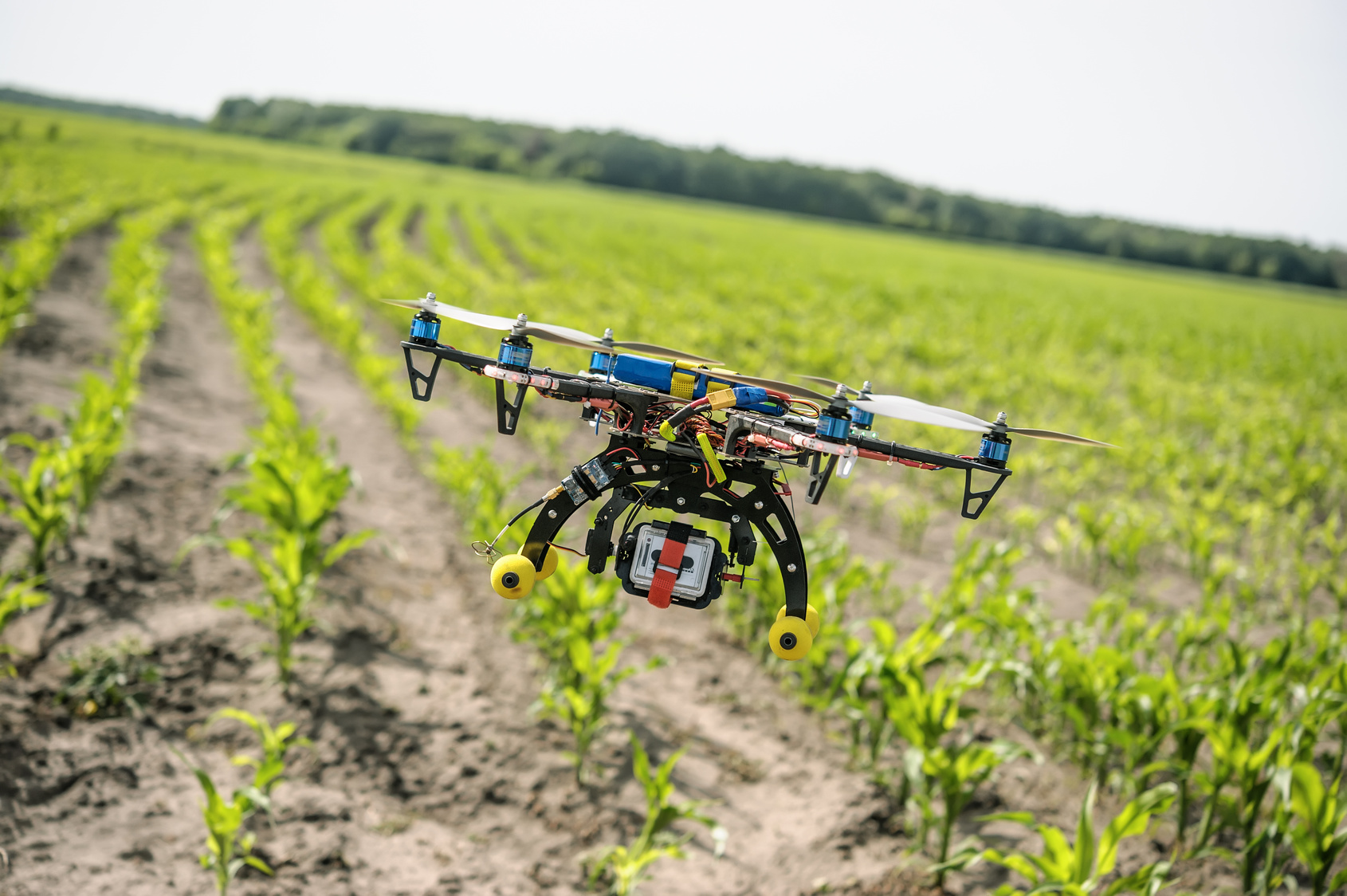Sponsored
Six Ways Drones Are Revolutionizing Agriculture

provided byPricewaterhouseCoopers
Unmanned aerial vehicles (UAVs)—better known as drones—have been used commercially since the early 1980s. Today, however, practical applications for drones are expanding faster than ever in a variety of industries, thanks to robust investments and the relaxing of some regulations governing their use. Responding to the rapidly evolving technology, companies are creating new business and operating models for UAVs.
The total addressable value of drone-powered solutions in all applicable industries is significant—more than $127 billion, according to a recent PwC analysis. Among the most promising areas is agriculture, where drones offer the potential for addressing several major challenges. With the world’s population projected to reach 9 billion people by 2050, experts expect agricultural consumption to increase by nearly 70 percent over the same time period. In addition, extreme weather events are on the rise, creating additional obstacles to productivity.
Agricultural producers must embrace revolutionary strategies for producing food, increasing productivity, and making sustainability a priority. Drones are part of the solution, along with closer collaboration between governments, technology leaders, and industry.
Six Options for Agricultural Drones
Drone technology will give the agriculture industry a high-technology makeover, with planning and strategy based on real-time data gathering and processing. PwC estimates the market for drone-powered solutions in agriculture at $32.4 billion. Following are six ways aerial and ground-based drones will be used throughout the crop cycle:
1. Soil and field analysis: Drones can be instrumental at the start of the crop cycle. They produce precise 3-D maps for early soil analysis, useful in planning seed planting patterns. After planting, drone-driven soil analysis provides data for irrigation and nitrogen-level management.
2. Planting: Startups have created drone-planting systems that achieve an uptake rate of 75 percent and decrease planting costs by 85 percent. These systems shoot pods with seeds and plant nutrients into the soil, providing the plant all the nutrients necessary to sustain life.
3. Crop spraying: Distance-measuring equipment—ultrasonic echoing and lasers such as those used in the light-detection and ranging, or LiDAR, method—enables a drone to adjust altitude as the topography and geography vary, and thus avoid collisions. Consequently, drones can scan the ground and spray the correct amount of liquid, modulating distance from the ground and spraying in real time for even coverage. The result: increased efficiency with a reduction of in the amount of chemicals penetrating into groundwater. In fact, experts estimate that aerial spraying can be completed up to five times faster with drones than with traditional machinery.
4. Crop monitoring: Vast fields and low efficiency in crop monitoring together create farming’s largest obstacle. Monitoring challenges are exacerbated by increasingly unpredictable weather conditions, which drive risk and field maintenance costs. Previously, satellite imagery offered the most advanced form of monitoring. But there were drawbacks. Images had to be ordered in advance, could be taken only once a day, and were imprecise. Further, services were extremely costly and the images’ quality typically suffered on certain days. Today, time-series animations can show the precise development of a crop and reveal production inefficiencies, enabling better crop management.
5. Irrigation: Drones with hyperspectral, multispectral, or thermal sensors can identify which parts of a field are dry or need improvements. Additionally, once the crop is growing, drones allow the calculation of the vegetation index, which describes the relative density and health of the crop, and show the heat signature, the amount of energy or heat the crop emits.
6. Health assessment: It’s essential to assess crop health and spot bacterial or fungal infections on trees. By scanning a crop using both visible and near-infrared light, drone-carried devices can identify which plants reflect different amounts of green light and NIR light. This information can produce multispectral images that track changes in plants and indicate their health. A speedy response can save an entire orchard. In addition, as soon as a sickness is discovered, farmers can apply and monitor remedies more precisely. These two possibilities increase a plant’s ability to overcome disease. And in the case of crop failure, the farmer will be able to document losses more efficiently for insurance claims.
What’s Next?
Looking further into the future, UAVs might involve fleets, or swarms, of autonomous drones that could tackle agricultural monitoring tasks collectively, as well as hybrid aerial-ground drone actors that could collect data and perform a variety of other tasks.
So, what’s slowing the progress of drones in agriculture? Beyond the barriers to widespread drone adoption in all industries—safety of drone operations, privacy issues, and insurance-coverage questions—the biggest agricultural concern is the type and quality of data that can be captured. To address this, the industry will push for more sophisticated sensors and cameras, as well as look to develop drones that require minimal training and are highly automated.
For more on drones in agriculture and seven other industries, see PwC’s comprehensive report.
Michal Mazur is a partner in PwC’s Drone-Powered Solutions division, @PwCDrone, based in Poland.
© 2016 PwC. All rights reserved. “PwC” refers to the U.S. member firm or one of its subsidiaries or affiliates, and may sometimes refer to the PwC network. Each member firm is a separate legal entity. Please see www.pwc.com/structure for further details. This content is for general information purposes only, and should not be used as a substitute for consultation with professional advisors.
Keep Reading
Most Popular
How scientists traced a mysterious covid case back to six toilets
When wastewater surveillance turns into a hunt for a single infected individual, the ethics get tricky.
The problem with plug-in hybrids? Their drivers.
Plug-in hybrids are often sold as a transition to EVs, but new data from Europe shows we’re still underestimating the emissions they produce.
Sam Altman says helpful agents are poised to become AI’s killer function
Open AI’s CEO says we won’t need new hardware or lots more training data to get there.
Stay connected
Get the latest updates from
MIT Technology Review
Discover special offers, top stories, upcoming events, and more.